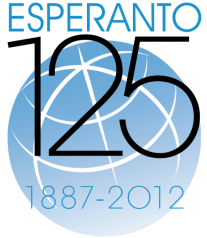Esperanto is a planned language launched in 1887. The founder of the language was Ludwik Leyzer Zamenhof. When he published his first book on the language, he used the pseudonym “Dr. Esperanto” (esperanto means “one who hopes”), and Esperanto also came to be the name of the language.

Today Esperanto is used by people in more than 100 countires, mainly as a means for communication among people with different mother tongues, but in the wake of an established language community, an “Esperanto culture” has also evolved.
A part of the idiology behind Esperanto was that it should serve as a common second language, becaues it is more fair to use a language that no person owns more than the other. Esperanto was therefore created to be as easy to learn as possible. Today people have many different reasons to learn Esperanto, among other things because they have a general interest for languages, or because Esperanto is fun and sociable.
Many users of Esperanto are organised in clubs and societies, as well as the international esperanto association, UEA.
Read more about Esperanto at the Wikipedia.
If you’d like to learn Esperanto, we recommend the onlline courses at Duolingo or www.lernu.net.



